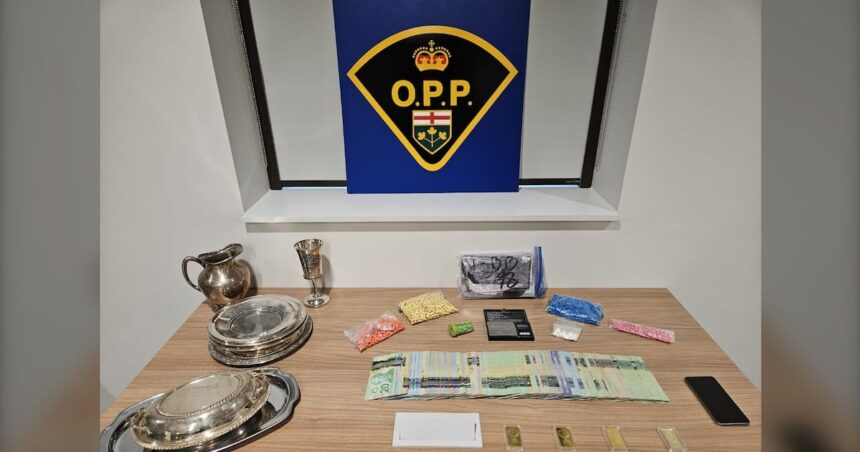I’ve just finished reviewing the police seizure case in Northern Ontario, and the details are extraordinary. What initially appeared to be a standard drug investigation led officers to an unexpected cache of stolen religious artifacts alongside narcotics and precious metals.
Provincial police executed a search warrant last week at a residence in Espanola, a small community west of Sudbury. The operation, according to OPP Detective Inspector Janet Williams, stemmed from community tips about suspicious activity at the property.
“We received multiple reports about unusual traffic patterns and concerning behaviors,” Williams told me during our phone interview yesterday. “What began as a drug investigation quickly expanded when officers discovered items clearly inconsistent with personal possession.”
The seized items paint a troubling picture of diversified criminal activity. Officers recovered approximately 1.5 kilograms of suspected cocaine, nearly 500 grams of methamphetamine, and various prescription medications packaged for street sale. The street value of the drugs alone exceeds $95,000, according to police estimates.
Most startling was the recovery of several ornate silver communion chalices, decorative crosses, and other religious items believed stolen from at least three churches across Northeastern Ontario over the past six months. The artifacts, some dating back over a century, hold significant historical and spiritual value to the affected parishes.
Father Thomas Nolan of St. Sebastian’s Parish in Sudbury expressed both relief and sadness when contacted about the recovery. “These aren’t merely valuable objects—they’re sacred vessels that connect our community to generations of faithful who came before us,” he explained. “Their theft represented a profound violation of our spiritual home.”
The investigation also yielded approximately $32,000 in Canadian currency, two small gold bars valued at approximately $15,000, and various items believed stolen in recent residential break-ins throughout the region.
Court records show that Richard Morrison, 42, and Melissa Larocque, 39, both of Espanola, face multiple charges including possession for the purpose of trafficking, possession of property obtained by crime exceeding $5,000, and break and enter. Neither defendant has entered a plea, and both remain in custody pending a bail hearing scheduled for next week.
The case highlights growing concerns about rural property crime and drug trafficking networks expanding beyond urban centers. Data from Statistics Canada shows property crime rates in Northern Ontario communities increased 12% over the past three years, outpacing provincial averages.
“These more remote communities often have fewer policing resources but increasingly sophisticated criminal operations,” explains Dr. Helena Jaczek, criminologist at Laurentian University. “The combination of drug trafficking and property theft we’re seeing here represents a troubling pattern where stolen goods may be used to finance drug operations or settle debts within trafficking networks.”
The recovery of church items specifically fits into a concerning trend. The Canadian Council of Churches documented over 40 incidents of theft targeting religious institutions across Canada last year, with precious metals and historical artifacts being primary targets.
“Churches often contain valuable items with historical significance that can be melted down or sold through underground networks,” explained Constable Devon Richards of the OPP’s Property Crimes Unit. “Many rural churches have minimal security systems, making them vulnerable targets.”
For Espanola Mayor Christine Hogarth, the arrests represent both a public safety success and a community wake-up call. “This case demonstrates why community vigilance and reporting suspicious activity matters,” she said during yesterday’s town council meeting. “But it also reveals how intertwined various criminal enterprises have become even in smaller communities like ours.”
Police continue investigating whether the accused may be connected to additional thefts in the region. They’ve established a dedicated hotline for potential victims or those with information about similar crimes.
For now, the recovered religious items remain in police custody as evidence, though authorities have promised their eventual return to the affected parishes. “These sacred objects will return to their rightful homes and purposes,” Father Nolan said. “Their recovery brings some healing to a wounded community.”
The investigation serves as a stark reminder that criminal networks increasingly operate across multiple domains—from drug trafficking to targeting cultural and religious heritage—requiring increasingly sophisticated investigative responses even in Canada’s smaller communities.






